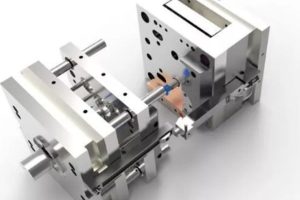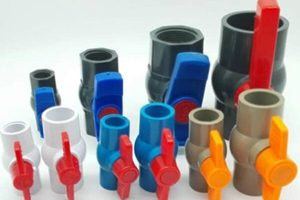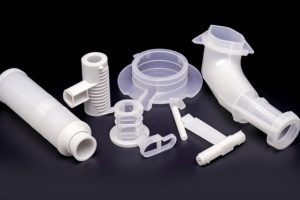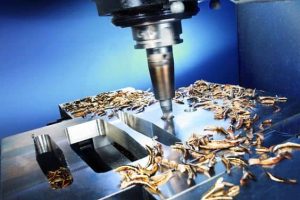Introduction
Injection molding is a popular manufacturing process used to produce plastic parts in large numbers with superior precision and accuracy. Unfortunately, if not managed properly, the process can result in considerable scrap or defective items. Thus, it’s essential to reduce scrap and enhance quality for your business to remain competitive within the industry.
This article will examine various methods and strategies to enhance injection molding quality, reduce scrap in production, and ultimately lower costs associated with this process. Furthermore, we’ll address common questions and concerns regarding injection molding and scrap reduction.

II. Enhancing Injection Molding Quality
A. Maintaining Accurate Melt Temperature and Pressure Differential
Maintaining the appropriate melt temperature and pressure differential during plastic injection molding is critical for producing high-quality parts. Melt temperature refers to the temperature at which plastic resin melts and flows through the machine; pressure differential refers to the difference in pressure between the injection unit and mold cavity.
Maintaining optimal melt temperature and pressure differential requires constant monitoring and control of process parameters. This can be accomplished using sensors and software that monitor temperatures and pressure in real time, with data collected being analyzed to adjust parameters as necessary.
Additionally, proper maintenance and service for a plastic injection molding machine are necessary to keep it running optimally. Regular cleaning and upkeep prevent contamination as well as wear-and-tear which could affect the quality of parts produced.

Maintaining proper melt temperature and pressure differential can help you produce high-quality parts that meet the required specifications while decreasing scrap produced during production.
B. Controlling Process Variation and Viscosity Variations
Controlling process variation and viscosity variations is another essential element in improving injection molding quality. Process variation refers to changes in process parameters like temperature, pressure, and fill rate that can occur during injection molding. Viscosity variation refers to changes in plastic resin flow behavior which could impact mold filling and part production quality.
Controlling process variation and viscosity variations requires the implementation of process monitoring and control systems. This could include sensors and software that continuously adjust parameters based on collected data. Furthermore, high-quality materials with consistent viscosities and flow behavior are essential to guarantee consistent quality parts during production.
Other strategies to control process variation and viscosity variations involve optimizing gating and venting systems as well as using cooling systems to regulate mold temperature. By controlling these factors, you can produce high-quality parts with minimal scrap and avoid the need for rework or corrective actions.
Overall, controlling process variation and viscosity variations is essential for producing high-quality parts that meet desired specifications and reducing scrap generated during injection molding.
C. Controlling Tooling and Molding Cycle
Tooling and molding cycle management is essential for improving injection molding quality. The mold plays an integral role in this process, its design and construction directly affecting parts produced. Furthermore, other stages such as filling, packing, and cooling can have an effect on finished parts produced during injection molding.
To effectively manage the injection mold cycle and molding cycle, it is essential to work with experienced tooling engineers and mold makers. This includes selecting appropriate mold materials, designing the cavity and gating systems, as well as optimizing cooling systems. Furthermore, regular inspection and upkeep of the mold is necessary in order to prevent wear-and-tear that could affect product quality.
Management the molding cycle involves optimizing the fill, pack and cooling stages to guarantee uniform plastic resin distribution throughout the mold and that parts produced meet desired specifications. This may involve adjusting process variables such as temperature, pressure and fill rate to achieve ideal outcomes.

By effectively managing the tooling and molding cycle, you can consistently produce high-quality parts that meet desired specifications while decreasing scrap generated during injection molding. Furthermore, proper management of tooling and molding cycles improves efficiency throughout the injection molding process and minimizes need for rework or corrective actions.
D. Integrating Process Data and Technicians for Process Control
Process control begins with having access to accurate process data.
Process data and experienced technicians for quality control in injection molding are essential tools. Process data provides valuable insights into the injection molding process, such as temperature, pressure and fill rate. With this data they can analyze and optimize parameters so parts produced with greater precision become even better quality.
Process data and experienced process technicians must be collected in real-time for effective control. This could involve using sensors or software to monitor process parameters and collect information which can then be analyzed by trained process technicians to optimize the process. Furthermore, training skilled personnel on how to interpret this data so they can make informed decisions on how best to improve injection molding operations is essential.
Other strategies for using process data and process technicians for process control involve implementing monitoring and control systems, as well as conducting regular process audits to identify areas for improvement. By utilizing process data and process technicians for process control, you can achieve greater consistency and efficiency in the injection molding process, producing high-quality parts that meet desired specifications.
III. Minimizing Scrap in Production
A. Determining the Sources of Scrap and DefectsScrap can occur for various reasons.
Identification of scrap and defects is the first step in eliminating scrap in production. Common sources of scrap and defects during injection molding processes include:
1. Poor design or construction of the mold
2. Variations in material quality 3.
3. Inconsistent process parameters like temperature, pressure, and fill rate
4. Lack of or inadequate maintenance of the injection molding machine.
5. Human error or lack of training
To identify the sources of scrap and defects in an injection molding process, it is necessary to conduct a comprehensive analysis. This includes collecting data on process parameters, performing visual inspections of parts produced, as well as inspecting mold and tooling for signs of wear and tear.
Additionally, it’s essential to involve process technicians and other personnel in the analysis process as they can offer valuable insights into what causes scrap and defects. By recognizing the root causes of scrap and defects, you can implement targeted solutions to address them and reduce production scrap.

Overall, pinpointing the causes of scrap and defects is essential to reduce production waste and enhancing part quality. By conducting an in-depth analysis of the injection molding process with input from process technicians and other personnel involved, you can implement effective solutions that increase efficiency and consistency throughout this step-by-step endeavor.
B. Resolving Human Error and Process Variation
Human error and process variation are major contributors to scrap and defects during the injection molding process. Therefore, addressing these factors is essential for reducing production waste.
To reduce human error in injection molding, it is essential to provide appropriate training and education for all personnel involved in the process. This could include instruction on operating and maintaining the injection molding machine as well as best practices for handling materials. Furthermore, standard operating procedures and protocols must be implemented to reduce the chance of human error.
To effectively address process variation, it is necessary to implement process monitoring and control systems. This may involve using sensors and software to monitor process parameters in real time and making necessary adjustments as needed for optimal efficiency. Furthermore, regular maintenance checks on injection molding machines are necessary to guarantee they run optimally and that any issues are addressed promptly.
Other strategies for combatting human error and process variation involve implementing quality control measures, such as visual inspections and statistical process control, as well as conducting regular process audits to identify areas for improvement.
By managing human error and process variation, you can reduce the potential for scrap or defects during injection molding and enhance both efficiency and quality of the parts produced.
C. Adopting Cost-Effective Solutions such as Lower Temperature and Fill Time
Implementing cost-effective solutions such as lower temperature and fill time can significantly reduce scrap in production. Lowering the temperature of plastic resin reduces the risk of thermal degradation, increasing material stability during injection molding. Furthermore, decreasing fill time minimizes sink marks and short shots – two common sources of scrap.

Another cost-effective solution is to optimize gating and venting systems. This can improve plastic resin flow into the mold and reduce required pressure, leading to fewer defects and scrap parts. Furthermore, using high-quality materials that exhibit consistent viscosity and flow behavior helps reduce scrap as it guarantees that each part produced has consistent quality.
Implementing these solutions necessitates analyzing the process data and pinpointing areas for improvement. This may involve conducting a process audit and consulting with technicians to pinpoint potential improvements. Furthermore, regular monitoring and analysis of process data are necessary to guarantee that changes are successful and the process is running at optimal efficiency.
Implementing cost-effective solutions such as lower temperatures and fill times, optimizing gating and venting systems, and using high-quality materials can significantly reduce scrap in production and enhance the overall efficiency of the injection molding process.
D. Minimizing Sink Marks and Short Shots
Dimensiuni This section focuses on minimizing sink marks and short shots in golf shots to increase accuracy, precision, and distance of impact.
Sink marks and short shots are two common sources of scrap in the injection molding process. Sink marks occur when plastic resin shrinks as it cools, creating depressions or indentations on the part surface. Short shots occur when resin fails to fill a mold cavity, leading to incomplete or defective pieces.
To reduce sink marks and short shots, it is essential to optimize gating and venting systems. Doing this helps the plastic resin flow better into the mold while decreasing the pressure needed – leading to fewer defects and scrap parts. Furthermore, maintaining a consistent temperature throughout the molding process helps avoid changes in resin flow behavior that could cause sink marks or short shots.
Another strategy is to utilize mold flow analysis software to simulate the injection molding process and identify potential areas for improvement. This could include adjusting gating and venting systems as well as optimizing temperature and pressure parameters to reduce sink marks or short shots.

By eliminating sink marks and short shots, you can produce high-quality parts with minimal scrap, thus eliminating the need for rework or corrective actions. This can translate into cost savings and increased efficiency throughout the injection molding process.
IV. How to Cut Costs in Injection Molding Operations
A. Determining Factors Affecting Injection Mold Prices
Understanding the factors that drive up the cost of injection molds is a critical first step to reducing molding expenses. Some factors that may influence cost include:
Material Selection
Design Complexity
Mold Size and Dimensionality
Number of Cavities
Tooling Materials and Construction
Mold Selection
Tooling Construction
Maintenance intervals
Tool selection
Construction materials.
Lead time and delivery
By understanding these factors, you can make educated decisions regarding the design and construction of an injection mold, while also recognizing opportunities to reduce costs without sacrificing quality.
B. Implementing Cost-Effective Solutions Like Heat Exchangers and One Machine
Implementing cost-effective solutions such as heat exchangers and one machine for multiple processes can significantly reduce injection molding costs. Heat exchangers save energy consumption and improve process efficiency by minimizing the amount of energy needed to heat and cool the mold. Utilizing one injection molding machine across multiple processes also minimizes overhead by eliminating additional equipment needs and shortening setup times between processes.

Other cost-effective solutions involve optimizing gating and venting systems to reduce the pressure needed, as well as using high-quality materials that have consistent viscosity and flow behavior. Furthermore, regular maintenance of an injection molding machine can prevent wear and tear and extend its lifespan, decreasing the need for costly repairs or replacements.
C. Optimizing Process Efficiency and Quality Parts
Focusing on process efficiency and producing quality parts is essential for cutting injection molding costs. To do this, implement process monitoring and control systems to optimize parameters like temperature, pressure, and fill rate; additionally use high-grade materials that have consistent viscosity and flow behavior.
Additionally, conducting regular audits and inspections of the injection molding process is essential to identify areas for improvement and address any issues before they become major problems. By focusing on process efficiency and producing quality parts, you can reduce scrap and defects risk, minimize the need for rework or corrective actions, and achieve greater consistency and efficiency throughout this step.

Overall, by understanding the factors that drive injection molding costs and employing cost-effective solutions such as heat exchangers and one machine, in addition to improving process efficiency and quality parts, you can significantly reduce these expenses and remain competitive within the industry.
VI. Conclusion
It is essential to stay competitive in the injection molding industry by emphasizing quality, efficiency, and cost-effectiveness. By following the strategies outlined in this article, you can achieve greater consistency and efficiency during your injection molding process, and produce high-quality parts while cutting costs – ultimately helping you remain profitable while meeting evolving customer demands.
In conclusion, the injection molding process is essential to the manufacturing industry, and improving quality control, cutting down on scrap during production, and decreasing costs are top priorities for manufacturers. By following the strategies outlined in this article and remaining current with technological advances and advancements, manufacturers can remain competitive and achieve success within their sector.






